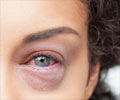New understanding on how vision works could lead to new tests for eye diseases, declare scientists in Australia.

But new research has revealed they also respond to black-and-white and moving objects too.
Dr Maziar Hashemi-Nezhad made the discovery during his PhD research at the University of Sydney. He performed an unplanned experiment to test whether colour-sensing cells would respond to a moving pattern.
"He saw an immediate response," ABC Science quoted lead researcher Paul Martin as saying.
Martin's team followed up the experiment by measuring the response of blue-sensing cells to moving patterns more closely.
When monkeys were presented with black-and-white drifting gratings their blue-sensing cells fired, confirming the chance discovery.
Advertisement
"Now, it is becoming clear the wiring is a lot less precise than a computer."
Advertisement
"If a nerve cell wants to tell the brain which way an object is moving it needs to respond to the same direction, regardless of size and velocity," said Martin.
He says the colour-sensing cells are only directionally specific for certain sized objects traveling at particular speeds. For anything else, they fire at will whenever they 'see' it move.
The findings were published in the Journal of Vision.
Source-ANI










